The Mekong Delta is one of the most biodiverse ecosystems in the world, and we need to preserve it. The Vietnamese government aims to establish a more climate-resilient land use with water management, and mangrove restoration is seen as a promising activity. Mangroves protect several species such as fish, insects, shrimp and other animals that we depend on. Mangroves also protect us against climate change, as they capture even more carbon than any other terrestrial forests. Besides that, mangrove forests improve the quality of the water in the environment. This makes mangroves special and necessary to preserve; hurting mangroves hurts the ecosystem around us and hurts ourselves.
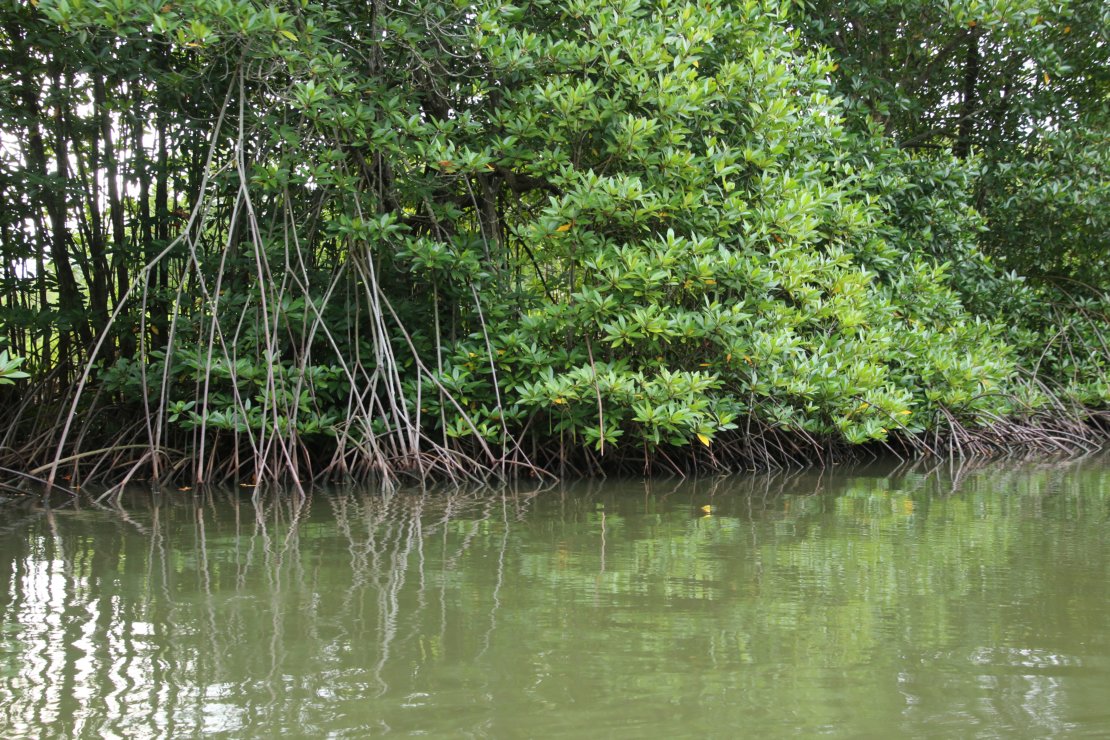 Mangrove trees in a shrimp pond
Mangrove trees in a shrimp pond
However, the Mekong Delta is not only home to mangroves but also to shrimp farms. Shrimp is one of Vietnam's biggest industries, and there is a downside to this industry: in the past, vast areas of mangroves were cut. Now, there is a policy to have at least 50% of mangroves on farms in the production forest areas. However, implementation of this policy is lagging behind. Furthermore, upstream intensive shrimp farming comes with the use of different chemicals and pollution. This chemical waste, along with plastic and water pollution is damaging the mangrove ecosystem and downstream shrimp farms, and fishermen suffer from declining yields and fish catches. To address this issue, ecotourism is being promoted as an extra source of income for farmers. However, the current level of pollution and ongoing decline in biodiversity may not seem very appealing to tourists.
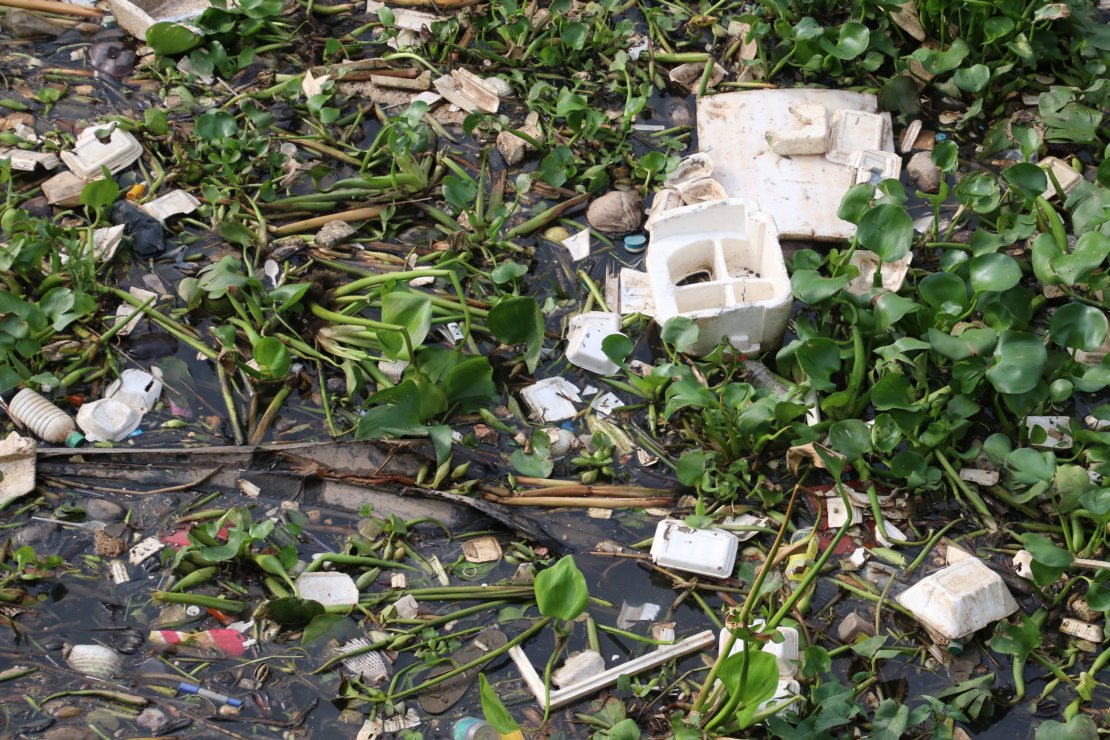 Pollution and plastic waste is, unfortunately, a common phenomenon in the Mekong Delta
Pollution and plastic waste is, unfortunately, a common phenomenon in the Mekong Delta
To address the principles of sustainable shrimp production and the need for mangrove restoration, our colleagues Iris van Duren and Louise van Leeuwen, Karin van de Braak from Sustainable Aquaculture Solutions and Tuan Quoc Vo from the Faculty of Natural Resources of Can Tho University developed a training funded by NUFFIC. It was part of the Orange Knowledge Program, which aims to contribute to a society's sustainable and inclusive development by offering access to education and training to professionals and organisations. The training consisted of different blocks: the first two training blocks covered topics such as sustainable shrimp farming and mapping mangroves and were provided online due to COVID restrictions. After these first two training blocks, and after the lift of these restrictions, the Dutch trainers were able to travel for a field trip and a stakeholder workshop. This workshop helped develop a more in-depth look understanding of problems perceived by different stakeholders in the field of sustainable shrimp farming and mangrove management.
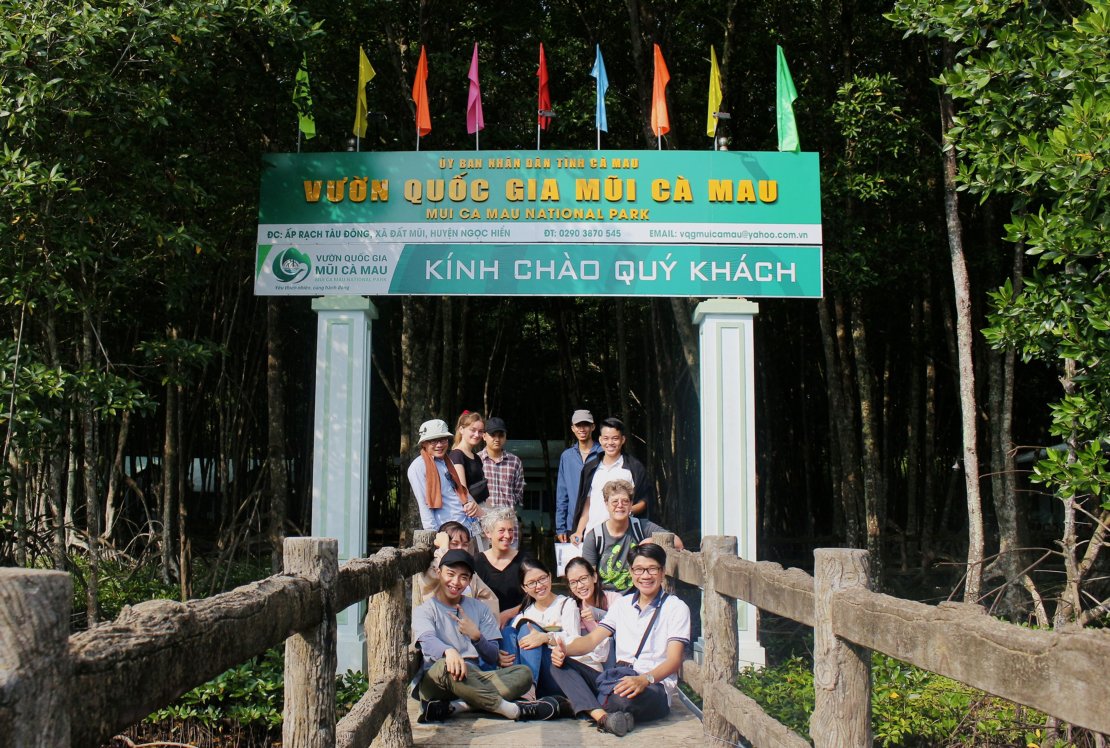 Visiting Mui Ca Mau National Park and interviewing the park authorities helped to get a deeper understanding of the management of the partk
Visiting Mui Ca Mau National Park and interviewing the park authorities helped to get a deeper understanding of the management of the partk
One of the highlights of the training was the stakeholder workshop. To make all stakeholders aware of the “bigger picture” the technique of creating a problem tree was applied. According to Iris:
For example, one of the identified problems by the stakeholders was the poor spatial planning and management of eco-shrimp farming in mangrove zones. When looking for solutions, one of the tools that can be used to monitor changes in mangrove zones is remote sensing. Part of the initial training blocks was related to remote sensing basics, in which students learned about the electromagnetic spectrum, satellites and satellite bands, pixels and coordinates. Analysing remotely sensed data is a key component of education and research at the NRS department.
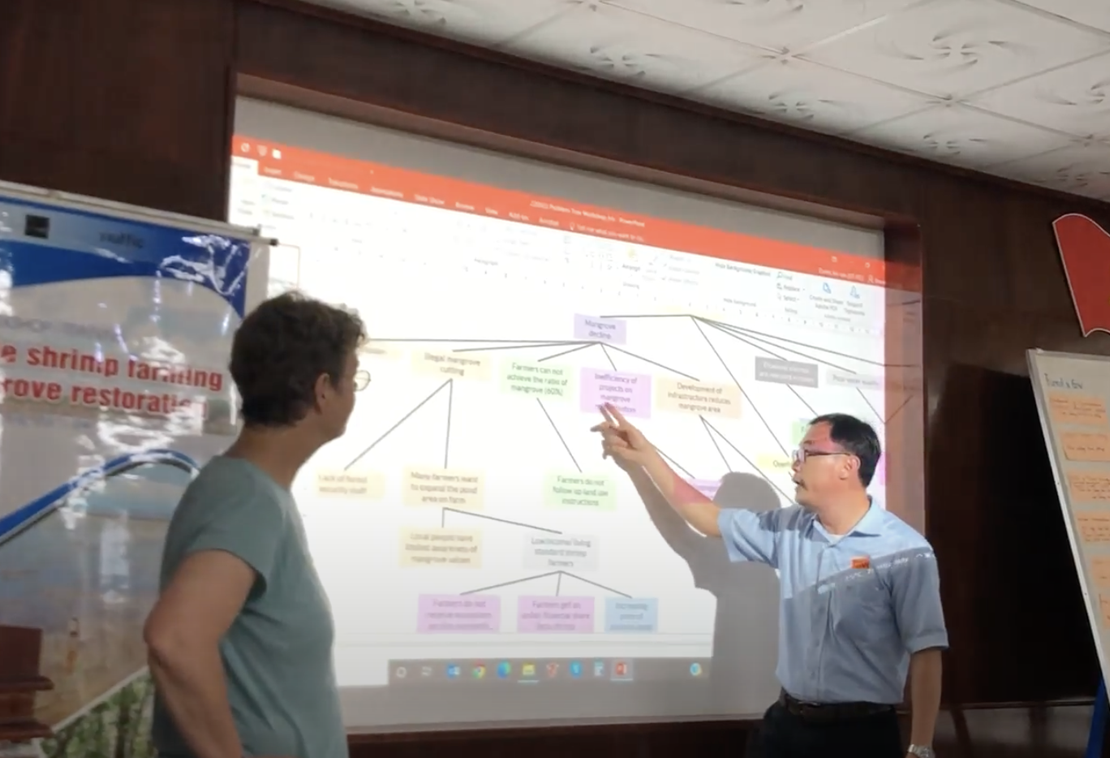 Problem tree analysis during the training
Problem tree analysis during the training
The problem tree exercise and discussions with different stakeholders revealed several knowledge gaps. These knowledge gaps were the start of the last two training blocks on e-learning and awareness-raising. In these blocks, not only technical skills such as video editing were important but also other skills such as synthesizing information for a particular target group. The training was received positively by the teams, who created a series of awareness-raising posters, videos (such as this one focused on mangroves and this one focused on ecotourism) and even, successful social media posts. The training was a success, and many requests were received for future cooperation.
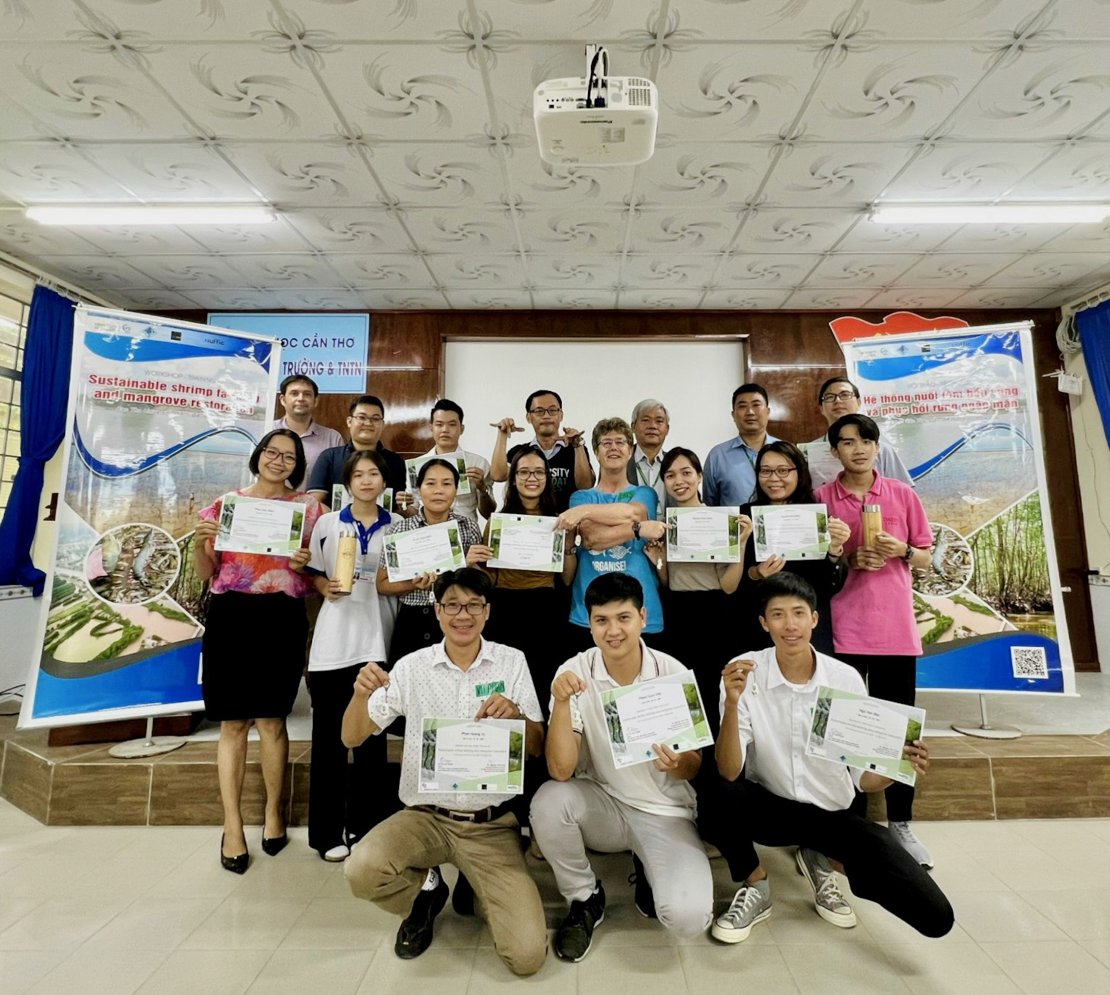 The participants of the training course received a certificate during the closing ceremony
The participants of the training course received a certificate during the closing ceremony
At the NRS Department, we use satellite data to monitor mangroves and other ecosystems. These data are key to preserving the environment, in this case, by monitoring mangrove changes (removal and replanting). Click here for more on our education on systems approaches for the management of Natural Resources.
To learn more about this story, please contact:

